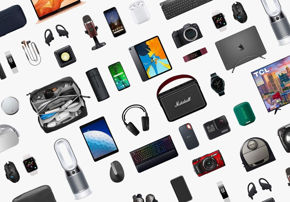(Photo: SHUTTERSTOCK/JAMESTEOHART)
Nvidia this week announced that more than a dozen robotics manufacturers have adopted the company’s digital twin platform to copy physical factories and recreate them in a real-time 3D graphics collaboration platform.
The technology lays the ground for a future where autonomous factories run by AI-enabled robots can more efficiently make robots and other equipment by studying the inefficiencies of physical plants.
“The era of robotics has arrived. Everything that moves will one day be autonomous,” said Nvidia CEO Jensen Huang. “We are working to accelerate generative physical AI by advancing the NVIDIA robotics stack.”
The workflow platform combines NVIDIA Metropolis vision AI, NVIDIA Omniverse physically based rendering and simulation, and NVIDIA Isaac AI robot development and deployment.

NVIDIA’S ISAAC PERCEPTOR TECHNOLOGY RENDERS A COMPUTER IMAGE OF A FACTORY WORKER FOR LATER STUDY AND TESTING IN A VIRTUAL SIMULATION. Credit: NVIDIA
BYD Electronics, Siemens, Teradyne Robotics and Intrinsic (an Alphabet company) are among more than a dozen robotics makers globally that Nvidia said are integrating the Isaac robotics platform, simulation software and AI models into their frameworks and robot models.
Nvidia’s package of five software products is designed to create virtual factories for simulation and testing. The ultimate goal, Nvidia said, is making warehouses and distribution centers highly efficient and safer for their human “coworkers,” and to act as intelligent human “assistants” for repetitive or ultra-precise tasks.
For example, the Isaac Manipulator — one part of the Isaac Robotics Platform — can perceive, understand, and interact with a factory environment and create virtual robotic arms that can then be studied and tested to create better physical robotics.
Included in Nvidia’s robotics stack is its Omniverse for simulation applications, Project GR00T, a GPU-accelerated simulation platform that creates humanoid AI-foundation models running on NVIDIA’s new Blackwell SoC architecture. The Omniverse platform provides developers with the building blocks, APIs, and micro-services to create physically accurate world-scale simulations of existing robotics plants; 3D simulation apps can run in Nvidia’s Omniverse Cloud APIs through the early access program or through an SDK they can purchase.
Taiwanese multinational electronics contract manufacturer Foxconn is using Nvidia’s Omniverse platform along with several partner tools to build its digital twin with software. “Our digital twin will guide us to new levels of automation and industrial efficiency, saving time, cost and energy,” Young Liu, Foxconn chairman said in a blog post.
Foxconn, which operates more than 170 factories worldwide, said its new “virtual plant” pushes the state of the art in industrial automation. It’s the digital twin of a new factory in Guadalajara, a hub of Mexico’s electronics industry and allows Foxconn’s engineers to virtually define processes and train robots so the physical plant runs at a higher efficiency.
“To design an optimal assembly line, factory engineers need to find the best placement for dozens of robotic arms, each weighing hundreds of pounds,” Madison Huang, Nvidia’s director of product marketing, wrote in the blog. “To accurately monitor the overall process, they situate thousands of sensors, including many networked video cameras in a matrix to show plant operators all the right details.”
For example, the robot arms may learn how to pick up an Nvidia Blackwell server and place it on an autonomous mobile robot (AMR). The arms can use Isaac Manipulator’s capabilities to find inspection paths for products, even when objects are placed in the way.
“With an estimated 10 million factories worldwide, the $46 trillion manufacturing sector is a rich field for industrial digitalization,” Huang said.











